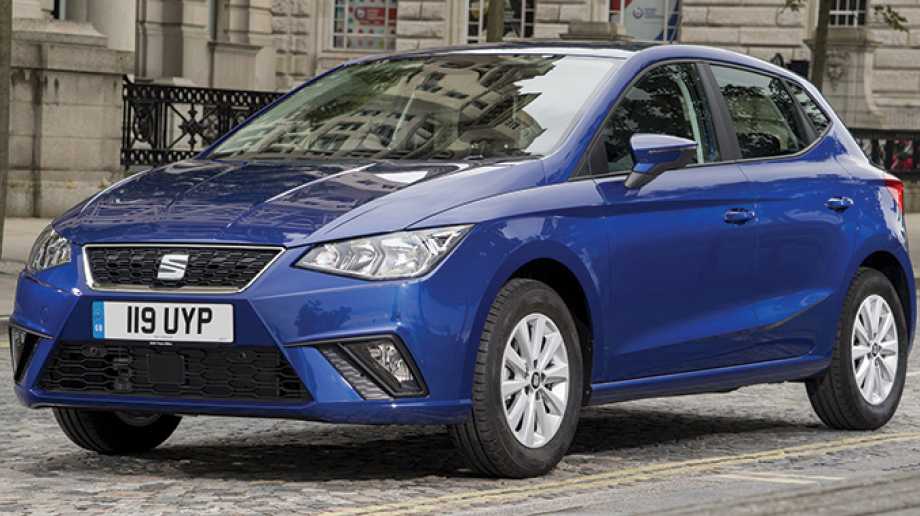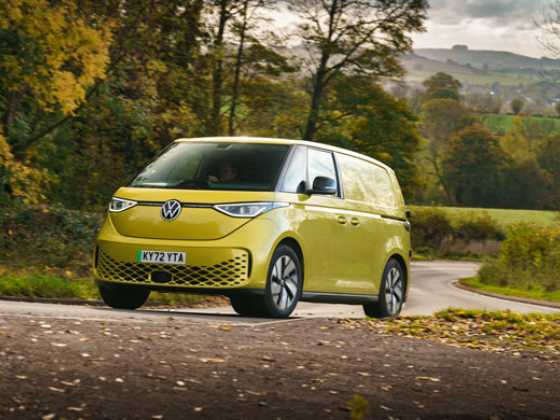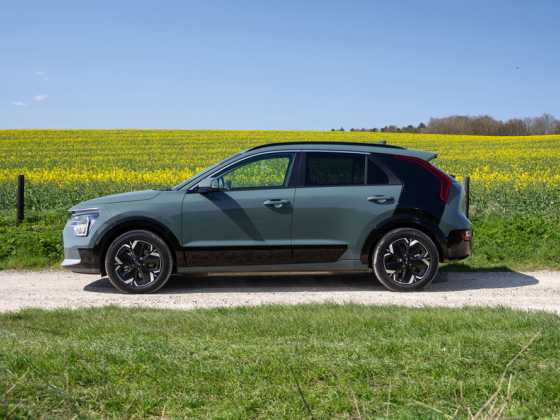Road test: SEAT Ibiza SE 1.0 TSI 95

A small car staple for almost 35 years, Richard Gooding finds that the fifth-generation SEAT Ibiza brings sharp-suited dynacism and petrol-powered economy to a fiercely competitive sector
What is it?
Closely related to the Volkswagen Polo since its second generation of 1993, the SEAT Ibiza debuted in 1984.
The first generation of the Spanish company’s ‘supermini’ small car was designed by Italian stylist Giorgetto Giugiaro (also famous for the first Volkswagen Golf and Fiat Panda) and featured a range of engines developed in collaboration with Porsche.
Based on the SEAT Ronda, itself a re-engineered Fiat Ritmo/Strada, the Ibiza enabled SEAT to discard its then-recent roots as a builder of Spanish-badged Fiats.
Established as a full Volkswagen Group subsidiary in 1990, SEAT had access to the latest automotive technologies, and following the second-generation car, the Ibiza has always been closely aligned to Volkswagen’s Polo in terms of size, development and shared powertrains. 2002 saw the arrival of the third generation, followed by the fourth in 2008.
The latest multiple award-winning model was launched at the 2017 Geneva motor show. Better proportions and increased interior space are thanks to the new small SEAT being the first car on the smallest ‘A0’ version of the Volkswagen Group’s high-tech modular ‘MQB’ platform.
Traditionally niche, the market for small diesel-engined hatchbacks is ever‑decreasing, and neither the makers of the new Ibiza or the latest Polo expects sales of TDI-engined models to be more than a single‑figure percentage. Petrol is king in the small car sector, but does it now offer almost diesel‑rivalling economy?
How does it drive?
Firmly fitting in with SEAT’s current and sharp‑suited design language, the new Ibiza has a purposeful and confident look. The three-door has been dropped from the range, so now, added practicality comes as standard with the friendlier five-door body.
Based on the new modular chassis, boot space is increased to 355 litres with the rear seats in place, and that shames cars from the class above. Interior space, and rear legroom in particular – the wheelbase has been stretched by 95mm to 2,654mm – is also comparable with larger cars.
As is the overall driving experience. Small cars haven’t felt that small for a few years now of course, and the new Ibiza heightens that feeling, with on-road manners similar to cars such as the Ford Focus and Volkswagen Golf, not to mention its Leon relative.
Incredibly refined, it bowls along at motorway speeds in virtual silence, its three-cylinder engine managing to keep up with traffic with little effort. More hushed than a diesel, and with the typical offbeat thrum so typical of three-cylinder engines, the 999cc unit suits the Ibiza well, offering pep and parsimony, qualities usually associated with gruffer diesel motors.
Punchy, even from lower down in the rev range, we would quite happily choose it over one of the TDI versions.
When you get off the motorway, the Ibiza delivers, too. Damping is first rate – only its Polo cousin rides better – and supremely well-judged, absorbing all but the harshest of pock-marked surfaces.
The steering does a good job of feeding back information about what the front tyres are doing, and good body control with little roll pairs nicely with lots of grip. Very pleasingly, even though it’s not the most engaging car to drive in its class, it’s right up there with the very best.
And it’s a similar story inside. Obviously, quality is a Volkswagen Group watchword, and while the new Polo still just shades it, the latest Ibiza assuredly offers an almost-premium small car interior. Mostly.
Soft-touch plastics abound, with only the door trims and the lower reaches of the dashboard appearing slightly inferior, while the 8.0-inch colour touchscreen infotainment and satellite navigation system – an £810 option on our test car – is super sharp and super quick, and even has an ‘Eco Trainer’ function which gives an arcade game-style display to hone your economy driving skills.
How economical is it?
A petrol engine will rarely be as economical as a highly-efficient diesel, but the latest generation of small-capacity turbocharged engines put up an extremely good, and surprisingly able, fight.
SEAT quotes a combined cycle economy figure of 60.1mpg – the preserve of diesel engines a few short years ago. We managed a highly impressive 53.8mpg in everyday mixed driving, proving that the latest range of TSI units give adequate, peppy performance with little sacrifice for economy.
A highlight of the new Ibiza’s petrol engine range is the 1.5-litre ‘EVO’ unit, first seen on the latest Volkswagen Golf. Incorporating clever cylinder deactivation technology, the 150bhp unit shuts down two of its four cylinders under light engine loads for improved economy and lower 112g/km emissions.
There’s even a CNG Ibiza in mainland Europe (see below) which offers emissions as low as 88g/km.
What does it cost?
The new SEAT Ibiza range kicks off with the 112g/km 1.0 74bhp S at £13,410, while the cheapest diesel, the 99g/km 1.6 S TDI starts at £15,995. Standard equipment on entry-level S cars includes air conditioning, auto headlights and a 5.0-inch ‘Media System Touch’ mono touchscreen infotainment system.
SE trim starts at £14,000 for the 74bhp car, while our TSI-engined 94bhp model costs from £14,595. Added equipment over S cars includes 15-inch ‘Enjoy’ alloy wheels, a leather steering wheel, LED daytime running lights / rear lights, as well as a 5.0-inch ‘Media System Colour’ touchscreen infotainment system.
Our car also featured the £810 ‘Full Link – Media System Plus’ and £365, 300W ‘Beats’ sound system with 8.0-inch colour touchscreen infotainment system.
SE Technology Ibizas tail and top at £14,250 and £16,835 respectively, while SE Design models start at £14,700. SE Technology cars boast an 8.0-inch colour touchscreen infotainment system, satellite navigation and full MirrorLink / Apple CarPlay / Android Auto smartphone connectivity.
SE Design models, as you would expect from the name, offer style‑led upgrades including 16-inch ‘Design’ alloy wheels, dark-tinted rear windows, a panoramic sunroof, and a 300W ‘Beats’ sound system.
The sporty FR-trimmed cars begin at £16,015 and introduce a 113bhp version of the 1.0‑litre engine of our test car, as well as a DSG gearbox option. The advanced 1.5‑litre TSI ‘EVO’ petrol engine with cylinder deactivation also comes in at this trim level.
Ibiza FRs add sports-themed touches including 17-inch ‘Dynamic’ wheels, front sports seats, black-capped door mirrors, as well as an inductive wireless smartphone charging pad.
Finally, Excellence models add more luxury with alcantara upholstery, dual‑zone climate control, and keyless entry. The 74bhp naturally-aspirated model starts at £16,715, rising to the £19,300 1.6 TDI, the top of the current Ibiza tree.
How much does it cost to tax?
With CO2 emissions of 106g/km, the SEAT Ibiza SE 1.0 TDI 95 costs £140 in the first year to tax, and the same thereafter. The cheapest variant in terms of taxation is the 99g/km 1.6-litre TDI, coming in at £120 for the first year and £140 thereafter.
The 112g/km versions are the priciest SEAT superminis to tax at £160 for the first year, dropping to £140 in subsequent years.
Why does my fleet need one?
With sales up – an almost 10 per cent increase in January 2018 – thanks to a good-looking and good value range of new models targeting both traditional and buoyant new markets, SEAT is riding the crest of a demand wave.
The latest Ibiza is typical of the company’s new attention to detail and ‘emotional’ push. Powertrain technologies are very much core strengths, too, though, and the latest Ibiza puts forward a compelling case for petrol-powered small cars.
Diesels may offer lower CO2, but the Benefit in Kind rates are higher, so small-engined petrol cars score highly at this fiercely competitive and sensitive price point.
And as the new Ibiza’s family of turbocharged petrol engines is so strong, you don’t feel short-changed in everyday driving situations picking the car fuelled from the green pump.
Small cars have obviously moved on in the last 34 years, and the new SEAT Ibiza typifies the contemporary breed.
Extremely refined, comfortable but with a dynamic edge which makes it enjoyable to drive, the latest incarnation of SEAT’s good value supermini brings a rarely-seen maturity to the small car sector.
It may still be a very traditional car in a very traditional segment, but the new Ibiza is none the worse for that. In fact, its strengths are amplified to make it one of the best small cars currently available.
A NATURAL FIT? THE SEAT IBIZA TGI
In mainland Europe, SEAT also sells a Compressed Natural Gas‑powered Ibiza. The Ibiza 1.0 TGI is a factory‑installed system and cuts CO2 emissions down to 88g/km.
A pair of CNG fuel tanks increase the total combined fuel range to almost 745 miles (1,200km). The Ibiza TGI also offers lower running costs thank to the increased efficiency of its engine, as well as the lower cost – and lower duty – of CNG in the first place.
SEAT claims that CNG also emits 85 per cent fewer nitrogen oxide emissions when compared to diesels, while CO2 emissions are 25 per cent lower than those of petrol engines.
CNG is a key player in the Volkswagen Group’s new alternative fuel strategy, and it also offers a gas‑powered version of the new VW Polo powered by the same 89bhp engine as the Ibiza.









